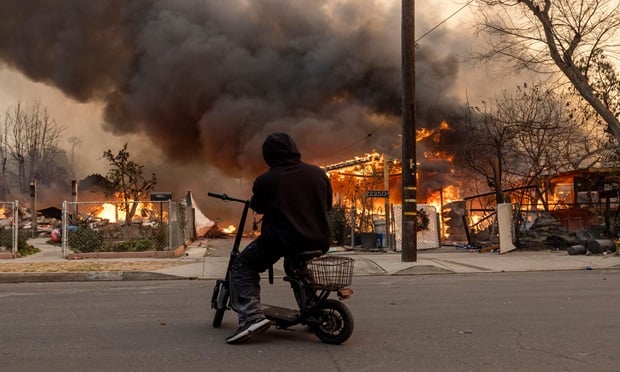Early Intervention Makes The Difference Important distinctions separate pollution from other property recoveries
When an insurer is hit with an environmental loss, the ability to pursue recovery from potentially responsible parties should be carefully investigated.
In many ways, environmental losses are no different than other property losses. However, there are important distinctions that bear further discussion.
Effective management of the loss scene is critical. How one responds in the early phases of an environmental loss will have important ramifications later on when big-ticket items are negotiated, such as the scope of any damage assessment and the type of cleanup remedy.
Mitigation of liability occurs on several levels. First and foremost, physical control of the loss scene, such as effective containment and response, is vital. However, establishing evidentiary and regulatory control over the loss scene is equally important.
Evidentiary control means conducting an effective factual investigation to determine causation and to identify and secure critical evidence that could be relevant in any subsequent recovery action.
The investigation should be directed by counsel so that appropriate confidentiality can be maintained, if necessary, under the attorney-client privilege and the attorney work product doctrine. This will include early retention of consulting experts to assist in the physical investigation of the loss scene, including:
Evaluating exposure risks.
Soil and groundwater sampling, if necessary.
Interfacing with environmental regulatory authorities.
Evaluating critical pieces of equipment that may have contributed to the loss (e.g. storage tanks and secondary containment systems).
Interviewing witnesses.
Reviewing relevant compliance documents, such as Resource Conservation and Recovery Act contingency plans and Clean Water Act spill prevention, control and countermeasure plans.
It should be recognized that evidence generated by an investigation will be of keen interest to environmental regulatory authorities, who typically will conduct their own parallel investigations.
Therefore, establishing credibility with environmental authorities early in the response effort is important. Open and frank communication with the authorities to the extent possible is essential.
Avoiding Spoliation
Perhaps the most common barrier to successful subrogation and recovery following an environmental loss is the plaintiff's failure to preserve important evidence. This is known as spoliationthe idea that a negligent defendant is not liable for a loss if the plaintiff failed to preserve relevant evidence that if not destroyed could be exculpatory.
A good example is a loss involving the catastrophic failure of a hazardous substance storage tank in which an insurer's investigation concludes that the tank was installed improperly. A subsequent recovery action against the tank installer could be barred under the doctrine of spoliation if the insured disposed of the tank before the defendant has an opportunity to inspect it, particularly if the only evidence of the installer's alleged negligence is the plaintiff's report evaluating the tank following the loss.
In this not uncommon scenario, the installer may claim the doctrine of spoliation precludes plaintiff's reliance on the report. Therefore, it is vitally important that the loss investigation have an eye toward identifying and preserving relevant evidence.
Once the evidence is secured, potentially responsible third parties should then be notified so that they have an opportunity to conduct their own inspection of the evidence and cannot later claim spoliation.
Recovering Against Third Parties
Not unlike a typical property loss, environmental losses usually do not occur in the absence of negligence. Obviously, if the insured is solely negligent, then there is no recovery opportunity. However, careful investigation can reveal other parties may have had some substantial role in the loss.
Using our tank failure example, above, the manufacturer or installer of the failed tank system is a potentially responsible party, as are ancillary component part manufacturers, third-party maintenance contractors and product suppliers.
If the covered environmental loss concerns latent contamination from historic operations, there may be an opportunity to recover from a prior owner or operator of the facility that caused the contamination.
The Comprehensive Environmental Response, Compensation and Liability Act (CERCLA or Superfund) provides an insurer that has paid for a cleanup with a right of contribution against a past or current owner or operator of a facility from which a hazardous substance has been released.
Most states have analogous statutes that afford similar contribution rights, such as New Jersey's Spill Compensation and Control Act, which provides a right of contribution against any person in any way responsible for the discharge.
In conclusion, environmental losses differ from property losses in several important ways. The need for early intervention to control and mitigate environmental liability distinguishes these losses from typical property losses.
Thorough evaluation of subrogation and recovery opportunities requires early involvement of environmental subrogation counsel, careful use of experts to evaluate potential causes and identify potentially responsible third parties so that subrogation potential is maximized.
Kevin J. Hughes chairs the Atlantic Region's subrogation and recovery department for the law firm of Cozen O'Connor in Philadelphia. He can be reached at [email protected].
Peter J. Fontaine chairs Cozen O'Connor's energy, environmental & public utility practice group in Cherry Hill, N.J., concentrating on site remediation and enforcement litigation. He can be reached at [email protected].
Reproduced from National Underwriter Edition, April 8, 2005. Copyright 2005 by The National Underwriter Company in the serial publication. All rights reserved.Copyright in this article as an independent work may be held by the author.
Want to continue reading?
Become a Free PropertyCasualty360 Digital Reader
Your access to unlimited PropertyCasualty360 content isn’t changing.
Once you are an ALM digital member, you’ll receive:
- Breaking insurance news and analysis, on-site and via our newsletters and custom alerts
- Weekly Insurance Speak podcast featuring exclusive interviews with industry leaders
- Educational webcasts, white papers, and ebooks from industry thought leaders
- Critical converage of the employee benefits and financial advisory markets on our other ALM sites, BenefitsPRO and ThinkAdvisor
Already have an account? Sign In Now
© 2025 ALM Global, LLC, All Rights Reserved. Request academic re-use from www.copyright.com. All other uses, submit a request to [email protected]. For more information visit Asset & Logo Licensing.








